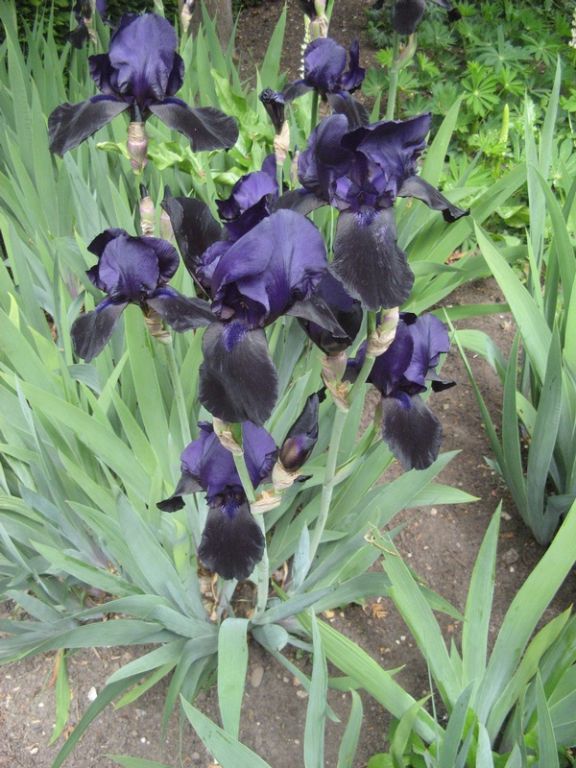Iris 'Black Swan'

Description: Superb almost black purple petals make this Iris a striking show when in flower in May and June. The beard on the petals is brown and the strap like leaves are bluish green.
Uses: Plant in large groups if possible for best effect. Good in sunny herbaceous borders and looks good with grasses.
Climate/Position: Always plant in a sunny border and avoid competition from other plants so that the roots are baked for the best flowering.
Height/Spread: 120cm height x 60cm clump.
Soil Requirements: Well drained soil.
Pruning: Cut back flower heads after flowering and cut back leaves in late autumn/winter.
Special Requirements: Bearded irises need to be planted with the rhizome, or root, just above the soil. This is because the rhizome needs to be baked by the sun in order to form flowers. Make sure that there is not too much competition from surrounding plants and remove any weeds. Rhizomatus Iris also need to be rejuvenated every few years by lifting the rhizome (root) after flowering and cutting out the oldest dead or damaged parts and replanting the younger roots but ensuring the rhizomes remain exposed to the sun.
Additional Interest: The German Iris is actually native to the Mediterranean region and can be traced back to the late 1500s. The dried root, which smells like violets, was commonly used in ancient Greece, Rome, and Egypt as a fragrance, flavoring and cosmetic ingredient. Although the aroma intensifies as it ages, curing the root can take up to three years or more. Once dry, the ground up root can be used in potpourri, perfumes, and lotions and extract that can be found in many beverages and baked foods and sweets.
Black Swan was introduced in 1960 so is well established.
